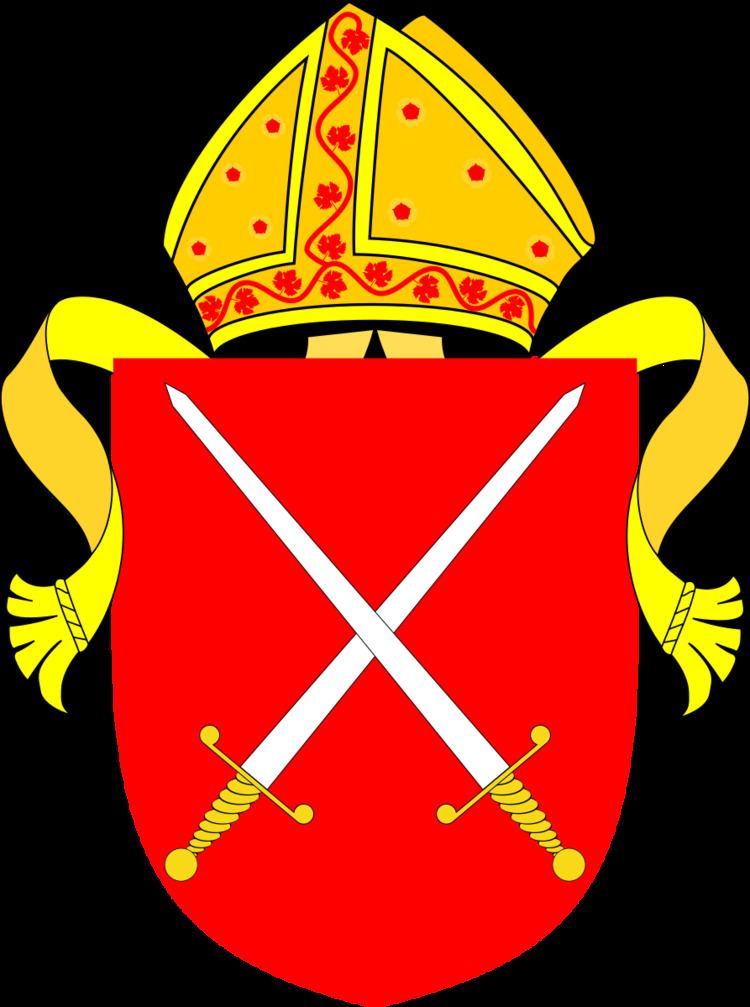First incumbent Thean | ||
 | ||
Formation 4th century, but current establishment from 604 | ||
The Bishop of London is the ordinary of the Church of England Diocese of London in the Province of Canterbury.
Contents
The diocese covers 458 km² (177 sq. mi.) of 17 boroughs of Greater London north of the River Thames (historically the County of Middlesex) and a small part of the County of Surrey (the district of Spelthorne, also historically part of Middlesex). The see is in the City of London where the seat is located at the Cathedral Church of Saint Paul which was founded as a cathedral in 604 and was rebuilt from 1675 following the Great Fire of London (1666).
Third in seniority in the Church of England after the Archbishops of Canterbury and York, the bishop is one of five senior bishops with the Archbishop of Canterbury, the Archbishop of York, the Bishop of Durham and the Bishop of Winchester, who sit as of right, each as one of the 26 Lords Spiritual in the House of Lords (as opposed to the remaining diocesan bishops of lesser rank, for whom elevation to one of the seats reserved is attained upon its vacancy and is determined by chronological seniority).
The bishop's residence is The Old Deanery, Dean's Court, London. Previously, for over 1000 years, Fulham Palace was the residence although, from the 18th century, London House next to the Bishop's Chapel in Aldersgate Street was where he had his chambers.
The current and 132nd Bishop of London is Richard Chartres, who was installed on 26 January 1996. It has been announced that Chartres is to retire effective Shrove Tuesday, 28 February 2017. The diocesan bishop of London has had direct episcopal oversight in the Two Cities area (the City of London and the City of Westminster) since the institution of the London area scheme in 1979.
History
According to a 12th-century list, which may be recorded by Jocelyne of Furness, there had been 14 "archbishops" of London, claiming London's Christian community was founded in the 2nd century under the legendary King Lucius and his missionary saints Fagan, Deruvian, Elvanus, and Medwin. None of that is considered credible by modern historians but, although the surviving text is problematic, either Bishop Restitutus or Adelphius at the 314 Council of Arles seems to have come from Londinium. However, according to later sources, there had been 16 Romano-British "bishops" of London.
The location of Londinium's original cathedral is uncertain. The present structure of St Peter upon Cornhill was designed by Christopher Wren following the Great Fire in 1666 but it stands upon the highest point in the area of old Londinium and medieval legends tied it to the city's earliest Christian community. In 1995, however, a large and ornate 4th-century church was discovered on Tower Hill, which seems to have mimicked St Ambrose's cathedral in the imperial capital at Milan on a still-larger scale. This possible cathedral was built between 350 and 400 out of stone taken from other buildings, including its veneer of black marble. It was burnt down in the early 5th century.
Following the establishment of the archdiocese of Canterbury by the Gregorian mission, its leader St Augustine consecrated Mellitus as the first bishop to the Saxon kingdom of Essex. (The first bishop of Rochester was also consecrated the same year.) Bede records that Augustine's patron, King Æthelberht of Kent, built a cathedral for his nephew King Sæberht of Essex as part of this mission. This cathedral was constructed in "London" and dedicated to St Paul. Although it's not clear whether Lundenwic or Lundenburh was intended, it is generally assumed the church was located in the same place occupied by the present St Paul's Cathedral atop Ludgate Hill in London. Renaissance rumours that the cathedral had been erected over a Roman temple of the goddess Diana are no longer credited: during his rebuilding of the cathedral following the Great Fire of 1666, Christopher Wren reported discovering no trace of such a structure.
Because the bishop's diocese includes the royal palaces and the seat of government at Westminster, he has been regarded as the "King's bishop" and has historically had considerable influence with members of the Royal Family and leading politicians of the day. Since 1748 it has been customary to appoint the Bishop of London to the post of Dean of the Chapel Royal, which has the amusing effect of putting under the bishop's jurisdiction, as dean, several chapels (at the Tower of London and St. James's Palace, among others) which are geographically in the Diocese of London but, as royal peculiars, are specifically outside the bishop's jurisdiction as bishop.
The Bishop of London originally had responsibility for the church in the British colonies in North America, although after the American Revolution of 1776, all that remained under his jurisdiction were the islands of the British West Indies. The diocese was further reduced in 1846, when the counties of Essex and Hertfordshire were ceded to the Diocese of Rochester.
Romano-British
The dates and names of these early bishops are very uncertain.
